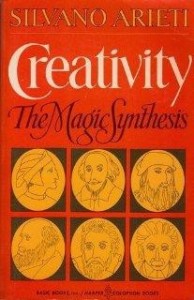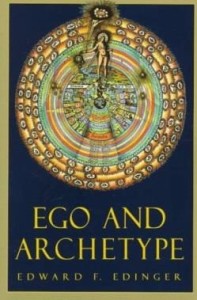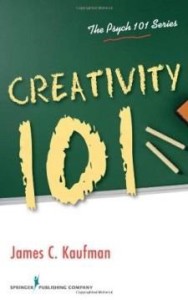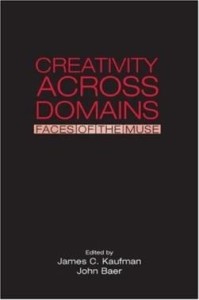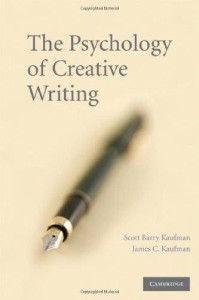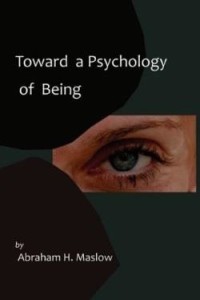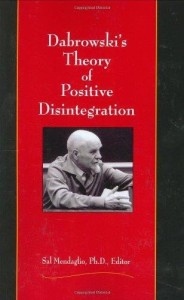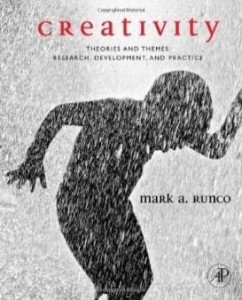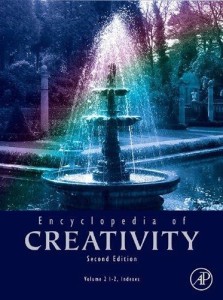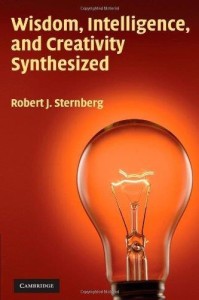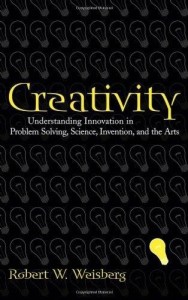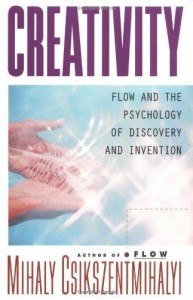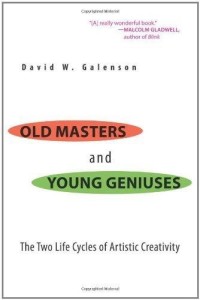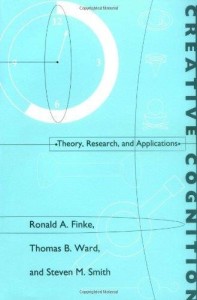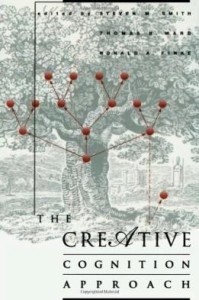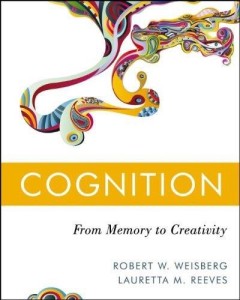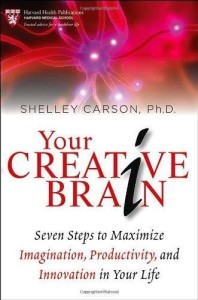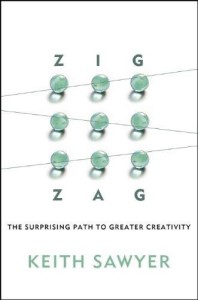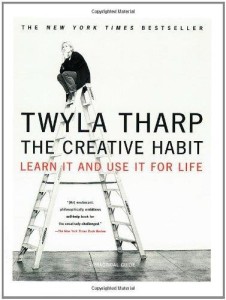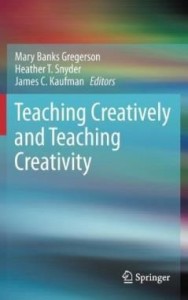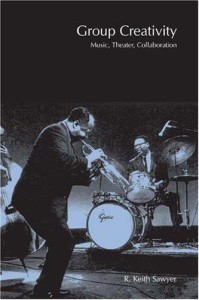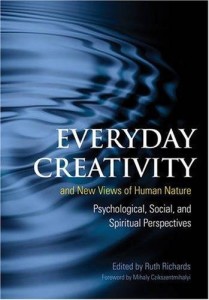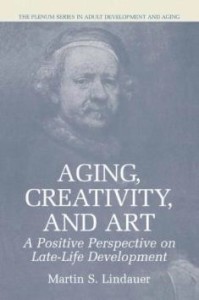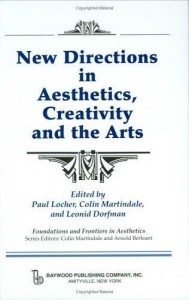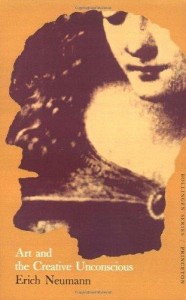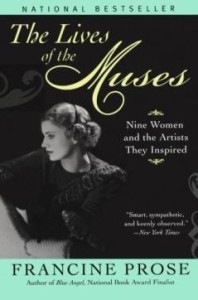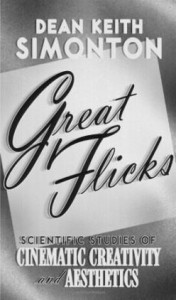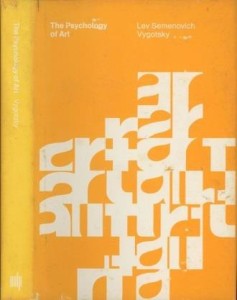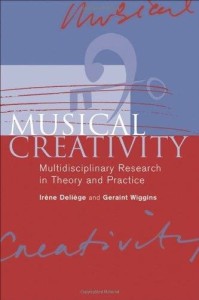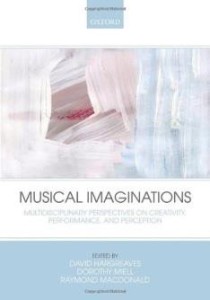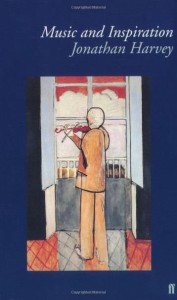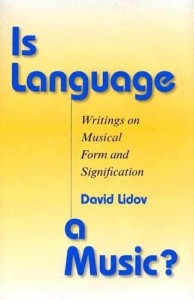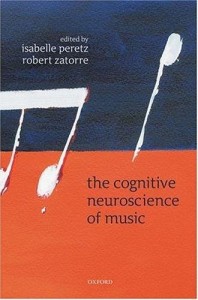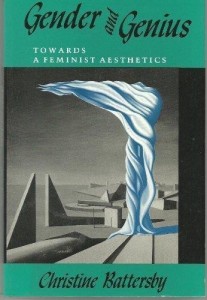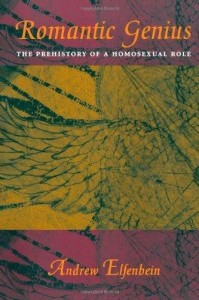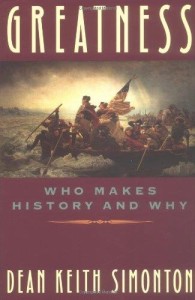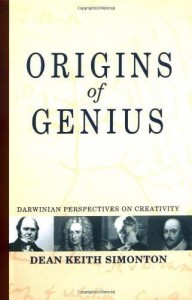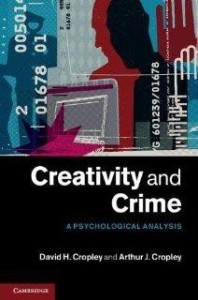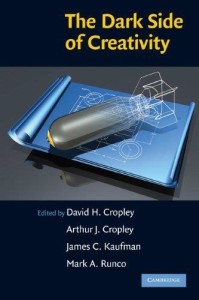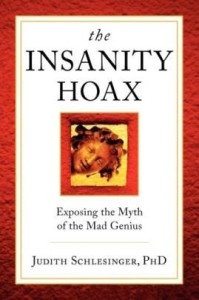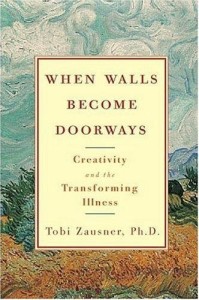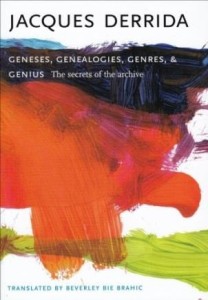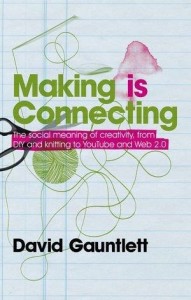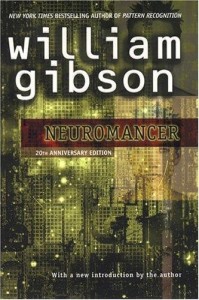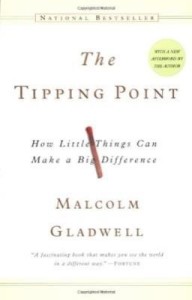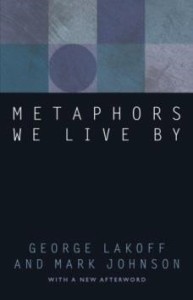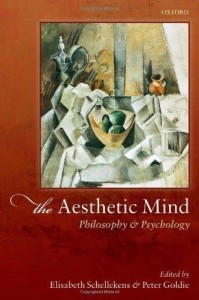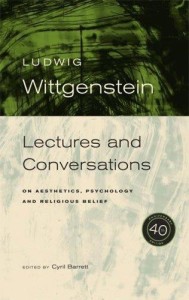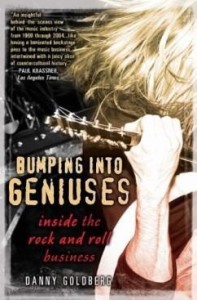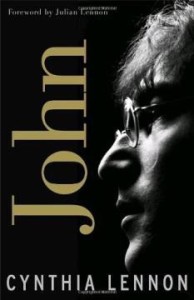There is a large amount of information available on aesthetics, creativity, and the arts, including books, blogs, articles, and much more. To help guide your search, our members have listed some of their recommended resources below.
- General Creativity
-
CREATIVITY: THE MAGIC SYNTHESIS – by Silvano Arieti
Reviews major theories of creativity and analyzes its psychological components, products, social environment, and biological foundations.
EGO AND ARCHETYPE – by Edward Edinger
This book is about the individual’s journey to psychological wholeness, known in analytical psychology as the process of individuation. Edward Edinger traces the stages in this process and relates them to the search for meaning through encounters with symbolism in religion, myth, dreams, and art. For contemporary men and women, Edinger believes, the encounter with the self is equivalent to the discovery of God. The result of the dialogue between the ego and the archetypal image of God is an experience that dramatically changes the individual’s worldview and makes possible a new and more meaningful way of life.
CREATIVITY 101 – by James C. Kaufman
What is creativity and how can we measure it? Creativity 101 serves as a brief, engaging introduction to the field of creativity. Dr. Kaufman presents the cutting-edge research and analyzes new and emerging theories in the field. This book investigates the many definitions of creativity, as well as how it is manifested and measured in schools, the workplace, business, art, media, and more.
CREATIVITY ACROSS DOMAINS: FACES OF THE MUSE – by James C. Kaufman & John Baer (Eds.)
Creativity Across Domains: Faces of the Muse sorts through the sometimes-confusing theoretical diversity that domain specificity has spawned. It also brings together writers who have studied creative thinkers in different areas, such as the various arts, sciences, and communication/leadership. Each contributor explains what is known about the cognitive processes, ways of conceptualizing and solving problems, personality and motivational attributes, guiding metaphors, and work habits or styles that best characterize creative people within the domain he or she has investigated.
THE CAMBRIDGE HANDBOOK OF CREATIVITY – by James C. Kaufman & Robert J. Sternberg (Eds.)
The Cambridge Handbook of Creativity is a comprehensive scholarly handbook on creativity from the most respected psychologists, researchers, and educators. This handbook serves both as a thorough introduction to the field of creativity and as an invaluable reference and current source of important information. It covers such diverse topics as the brain, education, business, and world cultures. The first section, “Basic Concepts,” is designed to introduce readers to both the history of and key concepts in the field of creativity. The next section, “Diverse Perspectives of Creativity,” contains chapters on the many ways of approaching creativity. Several of these approaches, such as the functional, evolutionary, and neuroscientific approaches, have been invented or greatly reconceptualized in the last decade. The third section, “Contemporary Debates,” highlights ongoing topics that still inspire discussion. Finally, the editors summarize and discuss important concepts from the book and look to what lies ahead.
THE PSYCHOLOGY OF CREATIVE WRITING – by Scott Barry Kaufman & James C. Kaufman
The Psychology of Creative Writing takes a scholarly, psychological look at multiple aspects of creative writing, including the creative writer as a person, the text itself, the creative process, the writer’s development, the link between creative writing and mental illness, the personality traits of comedy and screen writers, and how to teach creative writing. This book will appeal to psychologists interested in creativity, writers who want to understand more about the magic behind their talents, and educated laypeople who enjoy reading, writing, or both. From scholars to bloggers to artists, The Psychology of Creative Writing has something for everyone.
TOWARD A PSYCHOLOGY OF BEING – by Abraham H. Maslow
(In particular, “Chapter 10: Creativity in Self-Actualizing People”) In this compelling book, Professor Maslow uses studies of psychologically healthy people and of the healthiest experiences and moments in the lives of average people to demonstrate that human beings can be loving, noble and creative, that they are capable of pursuing the highest values and aspirations. A classic text in the field of humanistic psychology.
THE COURAGE TO CREATE – by Rollo May
What if imagination and art are not, as many of us might think, the frosting on life, but the fountainhead of human experience? What if our logic and science derive from art forms, rather than the other way around? In this trenchant volume, Rollo May helps all of us find those creative impulses that, once liberated, offer new possibilities for achievement. A renowned therapist and inspiring guide, Dr. May draws on his experience to show how we can break out of old patterns in our lives. His insightful book offers us a way through our fears into a fully realized self.
DABROWSKI’S THEORY OF POSITIVE DISINTEGRATION – by Sal Mendaglio (Ed.)
Kazimierz Dabrowski’s Theory of Positive Disintegration (TPD), which includes the widely known overexcitabilities, is one of the most influential theories in gifted education. This groundbreaking book, edited by Dr. Sal Mendaglio, brings together leading professionals, many of whom knew Dr. Dabrowski himself, and provides readers with a diversity of perspectives on TPD. It summarizes the research and application of TPD, as well as compares it to other theories of personality and psychological development. Dabrowski’s Theory of Positive Disintegration is a thought-provoking book that provides powerful insights and information not previously published about Dabrowski’s theory.
CREATIVITY: THEORIES AND THEMES: RESEARCH, DEVELOPMENT, AND PRACTICE – by Mark A. Runco
An integrative introduction to the theories and themes in research on creativity, this book is both a reference work and text for courses in this burgeoning area of research. The book begins with a discussion of the theories of creativity (Person, Product, Process, Place), the general question of whether creativity is influenced by nature or nurture, what research has indicated of the personality and style of creative individuals from a personality analysis standpoint, how social context affects creativity, and then coverage of issues like gender differences, whether creativity can be enhanced, if creativity is related to poor mental or physical health, etc. The book contains boxes covering special interest items including one page biographies of famous creative individuals and activities for a group or individual to test and/or encourage creativity, as well as references to internet sites relating to creativity.
THE CREATIVITY RESEARCH HANDBOOK – by Mark A. Runco (Ed.)
Few topics are as important – or as intriguing- as creativity. It plays a huge role in virtually every field, from art to organizational science, from counseling to technology. This volume, one of three in The Creativity Research Handbook series, goes into great depth about the research on creativity. It will bring the scholar up to date and bring the newcomer up to speed about what has been done in creativity research.
ENCYCLOPEDIA OF CREATIVITY – by Mark A. Runco & Steven R. Pritzker (Eds.)
The first edition of the successful Encyclopedia of Creativity served to establish the study of creativity is a field in itself. Now completely updated and revised in its second edition, coverage encompasses the definition of creativity, the development and expression of creativity across the lifespan, the environmental conditions that encourage or discourage creativity, creativity within specific disciplines like music, dance, film, art, literature, etc., the relationship of creativity and mental health, intelligence, and learning styles, and the process of being creative. This reference also appeals to a lay audience with articles specifically on the application of creativity to business settings. Available online via ScienceDirect and in limited print release.
EXPLAINING CREATIVITY: THE SCIENCE OF HUMAN INNOVATION – by R. Keith Sawyer
Explaining Creativity is an accessible introduction to the latest scientific research on creativity. The book summarizes and integrates a broad range of research in psychology and related scientific fields. In the last 40 years, psychologists, anthropologists, and sociologists have devoted increased attention to creativity; we now know more about creativity than at any point in history. Explaining Creativity considers not only arts like painting and writing, but also science, stage performance, business innovation, and creativity in everyday life. Sawyer’s approach is interdisciplinary. In addition to examining psychological studies on creativity, he draws on anthropologists’ research on creativity in non-Western cultures, sociologists’ research on the situations, contexts, and networks of creative activity, and cognitive neuroscientists’ studies of the brain. He moves beyond the individual to consider the social and cultural contexts of creativity, including the role of collaboration in the creative process.
WISDOM, INTELLIGENCE, AND CREATIVITY SYNTHESIZED – by Robert J. Sternberg
For thirty years, Robert J. Sternberg has been among the most vocal critics of narrow conceptions of intelligence. In Wisdom, Intelligence, and Creativity Synthesized Sternberg critically reviews and summarizes the best research available on human intelligence. He argues that any serious understanding of intelligence must go beyond the standard paper and pencil tests currently in use. In addition to analytical and quantitative abilities, a theory of intelligence must take account of peoples’ creative abilities – their ability to go beyond given information and imagine new and exciting ways of reformulating old problems. It must also take into account peoples’ ability to weigh options carefully and act prudently. Understanding one’s own intellectual shortcomings and learning how to overcome, Sternberg argues, is just as important as developing one’s strengths. As he weaves his way through decades of important research on these questions, Sternberg develops a vision of human intelligence that is far more nuanced and accurate than anything previously offered. Wisdom, Intelligence, and Creativity Synthesized is essential reading for psychologists, cognitive scientists, educators, and organizational researchers.

CREATIVITY: FROM POTENTIAL TO REALIZATION – by Robert J. Sternberg, Elena L. Grigorenko, & Jerome L. Singer (Eds.)
Who is creative and why? And what does it mean to be creative? Is a creative individual a master-of-all trades or a master of one? In other words, is creativity a generalized attribute or is it a domain-specific attribute? In Creativity: The Psychology of Creative Potential and Realization, authors ponder these questions and discuss the attributes that lead people to be creative in various fields such as the arts and letters, the sciences, and business. The emphasis of this volume is on the theoretical issue of whether the attributes that lead to creativity in one domain are the same as those that lead to creativity in another domain. Researchers and students alike will find these discussions delightfully intriguing. The study of creativity is burgeoning and multidisciplinary, in that it involves approaches of social, personality, cognitive, clinical, biological, differential, developmental, and educational psychology. The book will be of interest a wide range of psychologist, researchers and students.
CREATIVITY: UNDERSTANDING INNOVATION IN PROBLEM SOLVING, SCIENCE, INVENTION, AND THE ARTS – by Robert W. Weisberg
Conventional wisdom holds that creativity is a mysterious quality present in a select few individuals. The rest of us, the common view goes, can only stand in awe of great creative achievements: we could never paint Guernica or devise the structure of the DNA molecule because we lack access to the rarified thoughts and inspirations that bless geniuses like Picasso or Watson and Crick. Presented with this view, today’s cognitive psychologists largely differ finding instead that “ordinary” people employ the same creative thought processes as the greats. Though used and developed differently by different people, creativity can and should be studied as a positive psychological feature shared by all humans. Creativity: Understanding Innovation in Problem Solving, Science, Invention, and the Arts presents the major psychological theories of creativity and illustrates important concepts with vibrant and detailed case studies that exemplify how to study creative acts with scientific rigor.
- Creative Processes
-
CREATIVITY: FLOW AND THE PSYCHOLOGY OF DISCOVERY AND INVENTION – by Mihaly Csikszentmihalyi
Creativity is about capturing those moments that make life worth living. The author’s objective is to offer an understanding of what leads to these moments, be it the excitement of the artist at the easel or the scientist in the lab, so that knowledge can be used to enrich people’s lives. Drawing on 100 interviews with exceptional people, from biologists and physicists to politicians and business leaders, poets and artists, as well as his 30 years of research on the subject, Csikszentmihalyi uses his famous theory to explore the creative process. He discusses such ideas as why creative individuals are often seen as selfish and arrogant, and why the tortured genius is largely a myth. Most important, he clearly explains why creativity needs to be cultivated and is necessary for the future of our country, if not the world.
OLD MASTERS AND YOUNG GENIUSES: THE TWO LIFE CYCLES OF ARTISTIC CREATIVITY – by David W. Galenson
When in their lives do great artists produce their greatest art? Do they strive for creative perfection throughout decades of painstaking and frustrating experimentation, or do they achieve it confidently and decisively, through meticulous planning that yields masterpieces early in their lives? By examining the careers not only of great painters but also of important sculptors, poets, novelists, and movie directors, Old Masters and Young Geniuses offers a profound new understanding of artistic creativity. Using a wide range of evidence, David Galenson demonstrates that there are two fundamentally different approaches to innovation, and that each is associated with a distinct pattern of discovery over a lifetime. Experimental innovators work by trial and error, and arrive at their major contributions gradually, late in life. In contrast, conceptual innovators make sudden breakthroughs by formulating new ideas, usually at an early age. Galenson shows why such artists as Michelangelo, Rembrandt, Cézanne, Jackson Pollock, Virginia Woolf, Robert Frost, and Alfred Hitchcock were experimental old masters, and why Vermeer, van Gogh, Picasso, Herman Melville, James Joyce, Sylvia Plath, and Orson Welles were conceptual young geniuses. He also explains how this changes our understanding of art and its past. Experimental innovators seek, and conceptual innovators find. By illuminating the differences between them, this pioneering book provides vivid new insights into the mysterious processes of human creativity.
DIVERGENT THINKING AND CREATIVE POTENTIAL – by Mark Runco (Ed.)
Divergent thinking tests are given more often than any other tests of creativity. They are not actually tests of creativity per se but are instead assessments of creative potential. They are based on sound scientific theory and have been improved many times over the years. This volume describes the theory supporting the use of divergent thinking tests. It also presents specific research findings. It describes what has been discovered about divergent thinking in the past 10 years. Unlike other volumes, this text focuses on divergent thinking rather than attempting to cover all of creativity assessment. It gives the specifics of research so the validity of the claims can easily be determined.
- Creativity & Cognition
-
CREATIVE COGNITION: THEORY, RESEARCH, AND APPLICATIONS – by Ronald A. Finke, Thomas B. Ward, & Steven M. Smith
Creative Cognition combines original experiments with existing work in cognitive psychology to provide the first explicit account of the cognitive processes and structures that contribute to creative thinking and discovery. In separate chapters, the authors take up visualization, concept formation, categorization, memory retrieval, and problem solving. They describe novel experimental methods for studying creative cognitive processes under controlled laboratory conditions, along with techniques that can be used to generate many different types of inventions and concepts.
CREATIVITY AND REASON IN COGNITIVE DEVELOPMENT – by James C. Kaufman & John Baer (Eds.)
To what extent do creativity and imagination decline in childhood? Declines in levels of skill are quite uncommon, yet many have observed just such an unusual pattern with regard to the development of creativity and of the imagination. Is it the process of schooling itself, with its focus on the acquisition of knowledge and correct, rather than imaginative, answers that promotes the decline? This book explores the questions from a variety of perspectives. Essays by psychologists and educators discuss the relationships among creativity, reason, and knowledge.
THE CREATIVE COGNITION APPROACH – by Steven M. Smith, Thomas B. Ward, & Ronald A. Finke (Eds.)
Mental processes are the essence of creative endeavor. The Creative Cognition Approach extends this particular view of creativity, first proposed and developed by the editors in their earlier book Creative Cognition, to the programs and theoretical views of some of the most prominent researchers in the areas of problem solving, concept formation, and thinking. Chapters cover a wide range of approaches and processes that play a role in creative cognition, from those that have their roots in associationism (the notion that creative ideas are produced incrementally), to the Gestalt point of view (particularly insight), to current computational approaches. Each chapter deals with central issues in cognition and creativity, and many consider new ways in which creativity can be studied under controlled conditions. The Creative Cognition Approach begins with a new look at an ancient subject, dreams. It then takes up intuition and insight from a contemporary cognitive perspective, and the importance of using prior knowledge in the incremental view of creative problem solving, which is contrasted with the importance of various forms of fixation and sudden insight. Studies are presented that provide new methods for distinguishing insight problem solving from analytic problem solving, and a general description of recall, problem solving, and creative thinking is provided along with relevant experimental evidence. Numerous laboratory studies of creative idea generation are described that reveal the conceptual structures that give rise to imaginative thinking. Visual representations are considered in the context of memory distortions, and in the use of diagrams in scientific discovery. Models that help clarify the relation between comprehension and creativity are discussed, and a novel integration of ideas (primary and secondary process thinking, conditioning, genetic algorithms, chaos theory, the thermodynamics of crystallography) are brought together in a connectionist framework. A multivariate investment approach is used to study creative performance, and criteria for assessing and enhancing creative realism are detailed.
COGNITION AND THE VISUAL ARTS – by Robert L. Solso
An experienced and prolific writer, Robert Solso has a gift for simplifying sometimes difficult concepts in science. Here he brings a refreshing new approach to the psychology of art, synthesizing research from a vast collection of data on how humans perceive, process, and store information and applying it to the viewing and interpretation of art. In this first systematic study of the connection between the new cognitive psychology and its importance to art, Solso reflects on the long relationship between humankind and art, observing that “mind and art are one.” A major theme of this book, in fact, is that the clearest view of the mind comes when we create or experience art, a reverse of the usual view of art and cognition. The illustrations cover a wide range of examples, including African, Asian, and prehistoric art, but focusing primarily on Western art. The treatment of cognition applies a blend of the standard information-processing model, brain function, and neural networks.
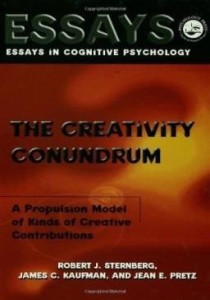
THE CREATIVITY CONUNDRUM: A PROPULSION MODEL OF KINDS OF CREATIVE CONTRIBUTIONS – by Robert J. Sternberg, James C. Kaufman, & Jean Pretz
This book challenges traditional notions of creativity as a trait, and brings forward ideas of multiple types of creativity, along with the possibility of development of creativity.
CREATIVITY: BEYOND THE MYTH OF GENIUS – by Robert W. Weisberg
In the first edition of Creativity, Robert Weisberg offered an approach for organizing a broad range of phenomena, unified and fragmented psychological literature on creativity, and linked it with recent research on cognitive processes. Now, in Creativity: Beyond the Myth of Genius Weisberg has thoroughly revised and expanded this work into a wide-ranging investigation of the nature and development of creative thought. The new book offers an analysis of the relation of “ordinary” thinking to “creative” thinking, including computer modeling of thought, and an examination of the creative processes that led to important mechanical inventions, scientific discoveries and works of art. From the author’s perspective, the creativity of the “genius” has its roots in the same thought processes that underlie everyday actions and ideas. An inquiry on the topic, Creativity: Beyond the Myth of Genius should be useful to students interested in creativity, critical reasoning, problem solving or cognition.
COGNITION: FROM MEMORY TO CREATIVITY – by Robert W. Weisberg & Lauretta M. Reeves
The process of cognition allows us to function in life; it translates inputs from the world so we can recognize the sound of the alarm clock, remember the day of the week, and decide which clothes to wear. Cognition: From Memory to Creativity provides readers with a clear, research-based, and well-illustrated presentation of the field, starting with memory—the most accessible starting point—to more complex functions and research in information processing. Authors Robert Weisberg and Lauretta Reeves include the newest neurological findings that help us understand the human processes that allow for cognition. Unique in its organization, Cognition incorporates both classical and modern research and provides demonstration experiments for students to conduct with simple materials.
- Neuroscience
-

HOW BRAINS MAKE UP THEIR MINDS – by Walter J. Freeman
I think, therefore I am. The legendary pronouncement of philosopher René Descartes lingers as accepted wisdom in the Western world nearly four centuries after its author’s death. But does thought really come first? Who actually runs the show: we, our thoughts, or the neurons firing within our brains? Walter J. Freeman explores how we control our behavior and make sense of the world around us. Avoiding determinism both in sociobiology, which proposes that persons’ genes control their brains’ functioning, and in neuroscience, which posits that their brains’ disposition is molded by chemistry and environmental forces, Freeman charts a new course — one that gives individuals due credit and responsibility for their actions. Drawing upon his five decades of research in neuroscience, Freeman utilizes the latest advances in his field as well as perspectives from disciplines as diverse as mathematics, psychology, and philosophy to explicate how different human brains act in their chosen diverse ways. He clarifies the implications of brain imaging, by which neural activity can be observed during the course of normal movements, and shows how nonlinear dynamics reveals order within the fecund chaos of brain function.
I OF THE VORTEX: FROM NEURONS TO SELF – by Rodolfo R. Llinas
In I of the Vortex, Rodolfo Llinas, a founding father of modern brain science, presents an original view of the evolution and nature of mind. According to Llinas, the “mindness state” evolved to allow predictive interactions between mobile creatures and their environment. He illustrates the early evolution of mind through a primitive animal called the “sea squirt.” The mobile larval form has a brainlike ganglion that receives sensory information about the surrounding environment. As an adult, the sea squirt attaches itself to a stationary object and then digests most of its own brain. This suggests that the nervous system evolved to allow active movement in animals. To move through the environment safely, a creature must anticipate the outcome of each movement on the basis of incoming sensory data. Thus the capacity to predict is most likely the ultimate brain function. One could even say that Self is the centralization of prediction. At the heart of Llinas’s theory is the concept of oscillation. Many neurons possess electrical activity, manifested as oscillating variations in the minute voltages across the cell membrane. On the crests of these oscillations occur larger electrical events that are the basis for neuron-to- neuron communication. Like cicadas chirping in unison, a group of neurons oscillating in phase can resonate with a distant group of neurons. This simultaneity of neuronal activity is the neurobiological root of cognition. Although the internal state that we call the mind is guided by the senses, it is also generated by the oscillations within the brain. Thus, in a certain sense, one could say that reality is not all “out there,” but is a kind of virtual reality.
- Fostering Creativity
-
YOUR CREATIVE BRAIN: SEVEN STEPS TO MAXIMIZE IMAGINATION, PRODUCTIVITY, AND INNOVATION IN YOUR LIFE – by Shelley Carson
Harvard psychologist Shelley Carson’s provocative book, published in partnership with Harvard Health Publications, reveals why creativity isn’t something only scientists, investors, artists, writers, and musicians enjoy; in fact, all of us use our creative brains every day at home, work and play. Each of us has the ability to increase our mental functioning and creativity by learning to move flexibly among several brain states. Your Creative Brain, called by critics a ‘new classic’ in the field of creativity, offers inspiring suggestions that can be applied in both one’s personal and professional life.
THEY SAY, I SAY: THE MOVES THAT MATTER IN ACADEMIC WRITING – by Gerald Graff & Cathy Birkenstein
The book that demystifies academic writing, teaching students to frame their arguments in the larger context of what else has been said about their topic–and providing templates to help them make the key rhetorical moves. The best-selling new composition book published in this century, in use at more than 1,000 schools, They Say / I Say has essentially defined academic writing, identifying its key rhetorical moves, the most important of which is to summarize what others have said (“they say”) to set up one’s own argument (“I say”). The book also provides templates to help students make these key moves in their own writing.
CREATIVE APPROACHES TO PROBLEM SOLVING: A FRAMEWORK FOR INNOVATION AND CHANGE – by Scott G. Isaksen, K. Brian Dorval, & Donald J. Treffinger
This text is the most comprehensive and contemporary overview and description of Creative Problem Solving (CPS) available today. Friendly and highly practical for a broad base of researchers and practitioners, the book provides a framework, language, guidelines, and set of easy-to-use tools for understanding challenges, generating ideas, and transforming promising ideas into action.
SPARKS OF GENIUS: THE THIRTEEN THINKING TOOLS OF THE WORLD’S MOST CREATIVE PEOPLE – by Robert S. Root-Bernstein & Michele M. Root-Bernstein
All the imagination needs to be fruitful is exercise. Robert and Michele Root- Bernstein identify the thinking tools employed by history’s greatest creative minds—from Albert Einstein and Jane Goodall to Amadeus Mozart and Virginia Woolf—so that anyone with the right mix of inspiration and drive can set their own genius in motion. With engaging narratives and ample illustrations, Robert and Michele Root-Bernstein investigate cognitive tools as diverse as observing, imaging, recognizing patterns, modeling, playing, and more to provide “a clever, detailed and demanding fitness program for the creative mind.”
ZIG ZAG: THE SURPRISING PATH TO GREATER CREATIVITY – by Keith Sawyer
With the prevalence of computer technology and outsourcing, new jobs and fulfilling lives will rely heavily on creativity and innovation. Keith Sawyer draws from his expansive research of the creative journey, exceptional creators, creative abilities, and world-changing innovations to create an accessible, eight-step program to increasing anyone’s creative potential. Sawyer reveals the surprising secrets of highly creative people (such as learning to ask better questions when faced with a problem), demonstrates how to come up with better ideas, and explains how to carry those ideas to fruition most effectively.
THE CREATIVE HABIT: LEARN IT AND USE IT FOR LIFE – by Twyla Tharp
All it takes to make creativity a part of your life is the willingness to make it a habit. It is the product of preparation and effort, and is within reach of everyone. Whether you are a painter, musician, businessperson, or simply an individual yearning to put your creativity to use, The Creative Habit provides you with thirty-two practical exercises based on the lessons Twyla Tharp has learned in her remarkable thirty-five-year career. In “Where’s Your Pencil?” Tharp reminds you to observe the world — and get it down on paper. In “Coins and Chaos,” she gives you an easy way to restore order and peace. In “Do a Verb,” she turns your mind and body into coworkers. In “Build a Bridge to the Next Day,” she shows you how to clean the clutter from your mind overnight. Tharp leads you through the painful first steps of scratching for ideas, finding the spine of your work, and getting out of ruts and into productive grooves. The wide-open realm of possibilities can be energizing, and Twyla Tharp explains how to take a deep breath and begin…
- Creativity & Education
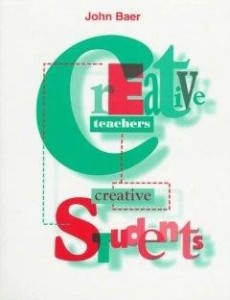
CREATIVE TEACHERS, CREATIVE STUDENTS – by John Baer
This book is designed to be largely self-teaching, and it can be worked through either as part of a course or on one’s own. Note the words “worked through.” There are many activities in the book to help you understand various ideas and techniques.
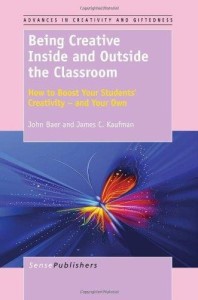
BEING CREATIVE INSIDE AND OUTSIDE THE CLASSROOM: HOW TO BOOST YOUR STUDENTS’ CREATIVITY – AND YOUR OWN – by John Baer & James C. Kaufman
This book has two primary goals – to show teachers how to teach their students to be more creative thinkers and to help them to develop their own creativity as teachers – and it shows teachers how to do these things in ways that don’t conflict with skill development and knowledge acquisition. In fact, teachers will learn how to teach for creativity in ways that result in improved skills and greater content knowledge. Teaching for creativity and creative teaching together will result in much higher levels of both student engagement and student learning. The book focuses on three big, well-researched ideas related to creativity training – divergent thinking, intrinsic motivation, and the CPS model of creative problem solving – and shows how to apply these ideas in designing lessons that promote creativity as well as encourage the development of content-based skills and knowledge. The book is written in a way that makes it easy for teachers to make these ideas their own, with many examples for use in K-12 classrooms.
CREATIVITY IN EDUCATION & LEARNING – by Arthur Cropley
A study of creativity in the context of education, an issue of great importance for teachers and students alike. It considers just how creativity “works” and how it can be encouraged. The book has an international and an historical sweep, and features many examples.
TEACHING CREATIVELY AND TEACHING CREATIVITY – by Mary Banks Gregerson, Heather T. Snyder, & James C. Kaufman (Eds.)
Creative teaching as well as teaching creativity are cutting edge issues in psychology today as recent academic and popular media coverage has shown. This volume expands on that interest with chapter authors drawn from interdisciplinary areas. It includes examples of creatively teaching across the education system, including preschool, K-12, undergraduate, and graduate level education. The variety of subjects covered by the chapters include psychology, math, science, and reading. In addition to creative teaching which may lead to enhanced learning and achievement in students, as well as enhanced creativity, another focus is teaching with the objective to enhance creativity.
TRANSITIONS: DEVELOPMENT THROUGH SYMBOLIC RESOURCES – by Tania Zittoun
What do young people do with the novels they read, the films they see, the music they hear and sing? How do these cultural products act as ‘symbolic resources’ in the process of development? And what can we, as researchers, learn by studying people’s uses of fiction? This monograph approaches development through the study of transitions and the processes of exploration that follow ruptures in people’s lives. Specifically, it examines young people’s symbolic responsibility as they have to choose among the wide range of cultural products societies exposes them to. The book thus examines the books, films and music that young people mobilize when they need to redefine their identity, learn informal know-how, or have to confer meaning to what happens to them in transitions. The book has a theoretical scope. It draws on cultural psychology and psychoanalysis to formulate the importance of semiotic mediation in thinking, feeling and acting. Its main contribution is to propose a model for analyzing uses of symbolic resources, such as books and films, in everyday life. It thus shows how uses of symbolic resources can enable new forms of experiences and conduct. It finally highlights social and personal conditions that might facilitate or hinder developmental uses of symbolic resources. The book, based on in-depth case studies, is addressed to scholars, professional and students in the fields of youth, culture and the media, cultural and developmental psychology, and life-long education.
- Creativity & Social Forces
-
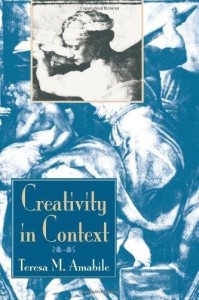
CREATIVITY IN CONTEXT – by Teresa M. Amabile
Creativity in Context is an update of The Social Psychology of Creativity, a classic text for researchers, students, and other interested readers. Creativity in Context incorporates extensive new material, going far beyond the original to provide a comprehensive picture of how the motivation for creative behavior, and creativity itself, can be influenced by the social environment. Teresa Amabile describes new findings from both her own research and from the work of many others in the field, detailing not only the ways in which creativity can be killed by social-psychological influences, but also the ways in which it can be maintained and stimulated. The research and the theory have moved beyond a narrow focus on the immediate social environment to a consideration of broad social influences in business organizations, classrooms, and society at large; beyond a documentation of social influences to a consideration of the cognitive mechanisms by which social factors might impact creativity; and beyond subject populations consisting of children and college students to an inclusion of professional artists, research scientists, and other working adults. Amabile describes a greatly expanded set of methodologies for assessing creativity, and introduces a set of methodologies for assessing the social environment for creativity in non-experimental studies. Throughout, the book maintains a clear focus on a comprehensive view of creativity—how the social context can influence motivation and how motivation, in conjunction with personal skills and thinking styles, can lead to the expression of creative behavior within that context. The result is a clarified theory of how creativity actually happens, with strong implications for supporting and increasing essential aspects of human performance.
GROUP CREATIVITY: MUSIC, THEATER, COLLABORATION – by R. Keith Sawyer
Group Creativity explores the unique form of creativity that emerges from collaborating groups. Dr. Sawyer draws on his studies of jazz ensembles and improvisational theater groups to develop a model of creative group processes. He applies this model of group creativity to a wide range of collaborating groups, including group learning in classrooms and innovative teams in organizations. In group creativity, a group comes together to collaboratively create in real time. The creative inspiration emerges from the interaction and communication among the members, and makes the result more than the sum of its parts. The dynamic, moment-to-moment communication among jazz musicians and improvising actors is the primary topic of the book. Sawyer explores performers’ close listening and sensitivity, the submerging of the ego to the group mind, and the ways that performers work together to create something better than and different from what one solitary individual could create alone. These explorations provide insight into all forms of group creativity and collaboration.
- Everyday Creativity
-
EVERYDAY CREATIVITY AND NEW VIEWS OF HUMAN NATURE: PSYCHOLOGICAL, SOCIAL, AND SPIRITUAL PERSPECTIVES – by Ruth Richards (Ed.)
What is everyday creativity? A capacity, a strategy, a process, all of these. It is an ability that is intimately woven into our daily lives and our personalities, one that we use from hour to hour; yet it remains, for most of us, underdeveloped and, unfortunately, underacknowledged. Writes editor and leading creativity researcher Ruth Richards, “Everyday creativity is about everyone, throughout our lives, and fundamental to our very survival. It is how we find our lost child, get enough to eat, make our way in a new place and culture. With our everyday creativity, we adapt flexibly, we improvise, we try different options, whether we are raising a child, counseling a friend, fixing our home, or planning a fundraising event.” In this provocative collection of essays, an interdisciplinary group of eminent thinkers and writers offer their thoughts on how embracing creativity-tapping into the “originality of everyday life”-can lead to improved physical and mental health, to new ways of thinking, of experiencing the world and ourselves. They show how creativity can refine our views of human nature at an individual and societal level and, ultimately, change our paradigms for survival-and for flourishing-in a world fraught with urgent challenges. Neither a dry treatise nor a manual, this anthology draws upon the latest research in the area to present a lively examination of the phenomenon and process of everyday creativity and its far-reaching ramifications for self, culture, history, society, politics, and humankind’s future.
- The Arts
-

THE PSYCHOLOGY OF ART APPRECIATION – by Bjarne Sode Funch
Psychological aesthetics, also called the psychology of art, is one of the academic disciplines that has been actively involved in the investigation of art and its influence on human existence. In this book a number of studies within the psycho-physical, cognitive, psychoanalytic and existential-phenomenological schools of thought have been selected in order to demonstrate how their view on art appreciation varies. Their conception of an art experience ranges from a spontaneous preference for a work of art to a blissful experience of transcendence. Five different types of art appreciation are identified and described. These different experiences with art do not only vary in their phenomenological manifestations but also in the degree that they involve a personal psychological dimension of the individual having the experience. The aesthetic experience as a transcendent phenomenon is identified as one of the most personal encounters with a work of art. On the basis of a detailed description of its phenomenology it is suggested that an aesthetic experience provides an emotion with a distinct form. In other words, an aesthetic experience is an instance in which an emotional quality is constituted in its existential actuality.
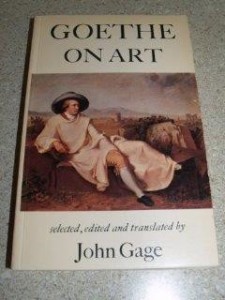
GOETHE ON ART – by John Gage (Trans.)
LITERATURE AND THE BRAIN – by Norman N. Holland
Literature and the Brain goes straight to the human core of literature when it explains the different ways our brains convert stories, poems, plays, and films into pleasure. When we are deep into a film or book, we find ourselves “absorbed,” unaware of our bodies or our surroundings. We don’t doubt the existence of Spider- Man or Harry Potter, and we have real feelings about these purely imaginary beings. Our brains are behaving oddly, because we know we cannot act to change what we are seeing. This is only one of the special ways our brains behave to with literature, ways that Literature and the Brain reveals.
AGING, CREATIVITY AND ART: A POSITIVE PERSPECTIVE ON LATE-LIFE DEVELOPMENT – by Martin S. Lindauer
This volume explores the strengths and opportunities of old age as these are manifested by the accomplishments of aging artists, late artistic works, and elderly arts audiences. It critically examines the psychology of creativity, cognitive development, and gerontology, and will be of interest to a wide range of professionals and students in these fields.
NEW DIRECTIONS IN AESTHETICS, CREATIVITY, AND THE ARTS – by Paul Locher, Colin Martindale, & Leonid Dorfman (Eds.)
The contributing authors to this book, all preeminent scholars in their fields, present their current thinking about the processes that underlie creativity and aesthetic experience. They discuss established theory and research, and provide creative speculation on future problems for inquiry and new approaches to conceptualizing and investigating these phenomena. The book contains many new findings and ideas, never before published or new by virtue of the novel context in which they are incorporated. Thus, the chapters present both new approaches to old problems and new ideas and approaches not yet explored by leading scholars in these fields. The chapters include a discussion of the internal mechanisms by which personality expresses itself during the making of and the response to art; the relationship between emotion and cognition in aesthetics, in terms of the interaction of top-down and bottom-up processes across the time course of an aesthetic episode; the affective processes that take place during pretend play and their impact on the development of creativity in children; and the causes and consequences of listeners’ intense experiences while listening to music.
ART AND THE CREATIVE UNCONSCIOUS – by Erich Neumann, Ralph Manheim (Trans.)
Four essays on the psychological aspects of art. A study of Leonardo treats the work of art, and art itself, not as ends in themselves, but rather as instruments of the artist’s inner situation. Two other essays discuss the relation of art to its epoch and specifically the relation of modern art to our own time. An essay on Chagall views this artist in the context of the problems explored in the other studies.
THE LIVES OF THE MUSES: NINE WOMEN & THE ARTISTS THEY INSPIRED – by Francine Prose
All loved, and were loved by, their artists, and inspired them with an intensity of emotion akin to Eros. In a brilliant, wry, and provocative book, National Book Award finalist Francine Prose explores the complex relationship between the artist and his muse. In so doing, she illuminates with great sensitivity and intelligence the elusive emotional wellsprings of the creative process.
GREAT FLICKS: SCIENTIFIC STUDIES OF CINEMATIC CREATIVITY AND AESTHETICS – by Dean Keith Simonton
What does it take to make a great motion picture? What do we even mean by cinematic greatness? What is more important: movie awards, critical acclaim, or box office success? Who has the biggest impact: the writer, the director, or the actors? Scientific research has provided some provocative answers. This volume will be invaluable to anyone interested in film, including any aficionado who is open to a scientific approach, and researchers in the areas of creativity, aesthetics, and cultural economics. The reported research comes from many disciplines, including psychology, sociology, economics, management, marketing, communications, journalism, broadcasting, history, musicology, and statistics.
THE PSYCHOLOGY OF ART – by Lev Semenovich Vygotsky
Vygotsky opened up an original field in the science of psychology, based on the socio-historical theory of the nature of man’s consciousness. This work, now translated into English for the first time, approaches the study of art from a psychological basis. However, Vygotsky’s view is free of the old subjective-empirical outlook. His method, while objective and analytical, found its basis in the reasoning that to analyze the structure of artistic creation one must recreate the total reaction the work arouses. This novel concept motivated Vygotsky to evolve the means by which artistic accomplishments could be examined and the elements of their validity “revealed.” The Psychology of Art discusses the literary genre in its classical forms—the fable, the epic, the short story, and Shakespearean tragedy. The heightened levels of perception and feeling that are created by great literature and drama are discussed by Vygotsky with clarity and conviction. Essentially a work of synthesis, The Psychology of Art laid the foundations for a new science of art, and as such is a major contribution to its study.
- Music
-
MUSICAL CREATIVITIES IN PRACTICE – by Pamela Burnard
Musical Creativities in Practice explores the social and the cultural contexts in which creativity in music occurs. It begins by considering what constitutes creativity – taking a cross cultural view of music, while also investigating creative processes far beyond just the classical music genre – to include electronic media, popular music, improvised music. In addition it looks at creativity in both writing and performing. A key part of the book focuses on the field of musical education, considering why creativity is important within the educational environment, and looking at how schools might sometimes stifle creativity in their music teaching, rather than encourage it. Throughout, the book makes extensive use of case studies and real- life examples taken from studies across the world, offering a powerful corrective to myths and outmoded conceptions which privilege the creative practice of individual artists. It argues the need for conceptual expansion of musical creativities in line with vital contemporary real world practices. It explores how different types of musical creativities are recognised and communicated in the real world practices of a diversity of professional musicians. It covers creative practice issues underlying composing, improvising, singer songwriting, originals bands, DJ cultures, live coding and interactive sound designing and the implications of creativity research for music education and for the assessment of creativities in industry and education. This book will be valuable for those in fields of music psychology and music education, from advanced undergraduate level upwards.
MUSICAL CREATIVITY: MULTIDISCIPLINARY RESEARCH IN THEORY AND PRACTICE – by Irene Deliege & Geraint Wiggins (Eds.)
This collection initiates a resolutely interdisciplinary research dynamic specifically concerning musical creativity. Creativity is one of the most challenging issues currently facing scientific psychology and its study has been relatively rare in the cognitive sciences, especially in artificial intelligence. This book will address the need for a coherent and thorough exploration. Musical Creativity: Multidisciplinary Research in Theory and Practice comprises seven sections, each viewing musical creativity from a different scientific vantage point, from the philosophy of computer modeling, through music education, interpretation, neuroscience, and music therapy, to experimental psychology. Each section contains discussions by eminent international specialists of the issues raised, and the book concludes with a postlude discussing how we can understand creativity in the work of eminent composer, Jonathan Harvey. This unique volume presents an up-to-date snapshot of the scientific study of musical creativity, in conjunction with ESCOM (the European Society for the Cognitive Sciences of Music). Describing many of the different aspects of musical creativity and their study, it will form a useful springboard for further such study in future years, and will be of interest to academics and practitioners in music, psychology, cognitive science, artificial intelligence, neuroscience and other fields concerning the study of human cognition in this most human of behaviours.
MUSICAL IMAGINATIONS: MULTIDISCIPLINARY PERSPECTIVES ON CREATIVITY, PERFORMANCE AND PERCEPTION – by David Hargreaves, Dorothy Miell, & Raymond MacDonald (Eds.)
Musical imagination and creativity are amongst the most abstract and complex aspects of musical behaviour, though, until recently, they have been difficult to subject to empirical enquiry. However, music psychology and some allied disciplines have now developed, both theoretically and methodologically, to the point where some of these topics are now firmly within our grasp. The study of creativity and imagination is growing rapidly in disciplines including psychology, sociology, neuroscience, and education. The inter- and multidisciplinary study of music, and developments in music psychology in particular, mean that studies of musical imagination and creativity in action are now distinctly possible. Musical Imaginations is a wide ranging, multidisciplinary review of the latest theory and research on musical creativity, performance and perception by some of the most eminent scholars in their respective disciplines. The topics addressed in this book include the investigation of creativity and imagination in music and emotion, composition and improvisation, performance and performance traditions, listening strategies, different musical genres and cultural belief systems, social collaboration, identity formation, and the development of psychologically-based strategies and interventions for the enhancement of performing musicians. With creativity now a topic of significant interest, this book will be valuable to all those in the fields of psychology, sociology, neuroscience, education, as well as to musicians themselves – dealing with practical as well as theoretical issues in music therapy, performance and education. The study of creativity and imagination is growing rapidly in disciplines including psychology, sociology, neuroscience, and education. The inter- and multidisciplinary study of music, and developments in music psychology in particular, mean that studies of musical imagination and creativity in action are now distinctly possible. This book undertakes a multidisciplinary review of these developments. It contains a wide range of contributions by some of the most eminent scholars in their respective disciplines, representing a comprehensive account of the state of the art of theory and research on musical creativity, performance and perception.
MUSIC AND INSPIRATION – by Jonathan Harvey, Michael Downes (Ed.)
In Music and Inspiration, one of Britain’s foremost composers, Jonathan Harvey, draws on the writings of a wide range of composers in an effort to understand and define what inspiration really is. His choice of material is expansive, aiming to chart what it is that composers from different backgrounds have in common, and how the concept of inspiration persists within otherwise very different musical cultures. Inspiration is commonly believed to be the product of a single moment, but the truth is more complex. Tchaikovsky wrote that “those who imagine that a creative artist can — through the medium of his art — express his feelings at the moment that he is moved, make the greatest mistake”. Composers have drawn inspiration from a wide variety of sources: Debussy’s muse was the majesty of nature, while Stravinsky admitted that the desire for praise comprised a great part of his musical creativity, and Brahms believed that inspiration was no less than a gift directly from God. Harvey discusses potential sources, such as philosophy, the unconscious, and external events, and examines the links between them, all the while building a rich and multifaceted understanding of what inspiration means for a composer.
IS LANGUAGE A MUSIC?: WRITINGS ON MUSICAL FORM AND SIGNIFICATION – by David Lidov
Is Language a Music? presents broadly ranging explorations of musical reference that address how and why language cannot be the only measure of meanings. Music, the author insists, is pervaded by significations, but often their erasure is as pertinent to artistry as their construction. This volume’s 15 essays in musical semiotics are grouped into sections that treat issues in structural description, present alternative views of theoretical foundations, consider the elaboration of gestural references to form musical discourse, explore some stylistic issues in 20th- century music, and examine the resistance to reference which is esteemed in the tradition of absolute music.
THE COGNITIVE NEUROSCIENCE OF MUSIC – by Isabelle Peretz & Robert J. Zatorre (Eds.)
Music offers a unique opportunity to better understand the organization of the human brain. Like language, music exists in all human societies. Like language, music is a complex, rule-governed activity that seems specific to humans, and associated with a specific brain architecture. Yet unlike most other high-level functions of the human brain–and unlike language–music is a skill at which only a minority of people become proficient. The study of music as a major brain function has for some time been relatively neglected. Just recently, however, we have witnessed an explosion in research activities on music perception and performance that correlates in the human brain. This volume brings together an outstanding collection of international authorities–from the fields of music, neuroscience, psychology, and neurology–to describe the amazing advances being made in understanding the complex relationship between music and the brain.
- Genius
-
GENDER AND GENIUS: TOWARDS A FEMINIST AESTHETIC – by Christine Battersby
During the Middle Ages and the Renaissance, women were blamed for having too much passion, imagination and sexual appetite. By the late eighteenth century, however, these qualities had been revalued and appropriated for male artists. The virtues attributed to the Romantic “genius” made him like a woman but not a woman. He belonged to a third, supermale sex. As new and old concepts of woman and genius clashed, there evolved a rhetoric of sexual apartheid which today still affects our perceptions of cultural achievement. Genius from the time of the Greeks has been defined as male. In this study, Christine Battersby traces the history of the concept of genius from ancient Rome to the present day, showing how pagan myths linking divinity with male procreativity have survived into our own time. The author explores the dilemma faced by female creators who have resisted the idea that Art requires “feminine” qualities of mind but male sexual energies. Gender and Genius argues, against those currently seeking to establish an aesthetics of the “feminine,” that a feminist aesthetics must look to the achievements of women artists in the past as well as in the present.
ROMANTIC GENIUS – by Andrew Elfenbein
Surprisingly little has been written about homosexuality in British Romantic writing, and, similarly, little discussion has emerged about homosexual themes in the lives and poetic careers of the major Romantics. In Romantic Genius, Andrew Elfenbein explores the correspondence between the stereotypes applied to the “genius” and those applied to the homosexual, showing the centrality of disreputable desires to the works of Romantic male authors — from William Beckford to Samuel Taylor Coleridge to William Blake — as well as to the writings of lesser-known but equally significant female authors of the period.
GENIUS: THE HISTORY OF AN IDEA – by Penelope Murray (Ed.)
This book explores the history of the idea of genius from its origins in classical antiquity to its deconstruction in postmodernist criticism. Focusing mainly on the creative arts, the book examines certain key points in the development of the idea, and also addresses the problem of what constitutes genius in specific subject areas. Experts in different fields have contributed chapters on literature, art, music, mathematics, philosophy and psychiatry to produce a volume which illuminates an abiding obsession throughout the history of European culture. The contributors to this volume show how the ancient image of the inspired poet and the Renaissance conception of the divino artista both anticipate later notions of genius, developed into the 18th century around the central figures of Homer, Shakespeare and Goethe. Romantic definitions of genius are analysed, as are the implications of Nietzsche’s pronouncements on ‘human greatness’. The historic conjunction of genius and madness is explored from the early belief in divine possession through the Renaissance notion of melancholy to the age of psychoanalysis.
GENIUS 101 – by Dean Keith Simonton
“Genius,” contrary to common belief, is not strictly a matter of intelligence. Intellect, personality, creativity, even serendipity play a significant role in molding a genius. So, what does it mean to be a genius? Genius 101 examines the many definitions of “genius,” and the multiple domains in which it appears, including art, science, music, business, literature, and the media. Dr. Simonton introduces the study of genius theory and the research supporting it, using non-scientific, accessible language-fit for a non-genius.
GREATNESS: WHO MAKES HISTORY AND WHY – by Dean Keith Simonton
This path-breaking work offers the first comprehensive examination of the important personalities and events that have influenced the course of history. It discusses whether people who go down in history are different from the rest of us and whether specific personality traits predispose certain people to become world leaders, movie stars, scientific geniuses, and athletes. It sheds light on the depth of potential in everyone, yielding important clues as to how we can take advantage of our own individual personality traits. Probing the lives of a range of important figures, the book explores the full range of phenomena associated with greatness, scrutinizing the significance of everything from genetic inheritance, intuition, aesthetic appreciation, and birth order, to formal education, sexual orientation, aging, IQ, and alcohol and drug abuse. This book will be of interest to anyone interested in the people and events that have helped shape the world, including mental health professionals and scholars studying psychological topics in the larger context of science, art, politics, and history. The book also serves as an engaging text for undergraduate psychology courses.
ORIGINS OF GENIUS: DARWINIAN PERSPECTIVES ON CREATIVITY – by Dean Keith Simonton
How can we account for the sudden appearance of such dazzling artists and scientists as Mozart, Shakespeare, Darwin, or Einstein? How can we define such genius? What conditions or personality traits seem to produce exceptionally creative people? Is the association between genius and madness really just a myth? These and many other questions are brilliantly illuminated in The Origins of Genius. Dean Simonton convincingly argues that creativity can best be understood as a Darwinian process of variation and selection. The artist or scientist generates a wealth of ideas, and then subjects these ideas to aesthetic or scientific judgment, selecting only those that have the best chance to survive and reproduce. Indeed, the true test of genius is the ability to bequeath an impressive and influential body of work to future generations. Simonton draws on the latest research into creativity and explores such topics as the personality type of the genius, whether genius is genetic or produced by environment and education, the links between genius and mental illness (Darwin himself was emotionally and mentally unwell), the high incidence of childhood trauma, especially loss of a parent, amongst Nobel Prize winners, the importance of unconscious incubation in creative problem-solving, and much more. Simonton substantiates his theory by examining and quoting from the work of such eminent figures as Henri Poincare, W. H. Auden, Albert Einstein, Marie Curie, Charles Darwin, Niels Bohr, and many others. For anyone intrigued by the spectacular feats of the human mind, The Origins of Genius offers a revolutionary new way of understanding the very nature of creativity.
- Dark Side of Creativity
-
CREATIVITY AND CRIME: A PSYCHOLOGICAL ANALYSIS – by Arthur Cropley & David Cropley
Creativity is typically perceived to be a positive, constructive attribute and yet, highly effective, novel crimes are committed which illustrate that creativity can also be utilised to serve a darker and more destructive end. But how can these ‘creative criminals’ be stopped? Adopting a psychological approach, renowned subject experts Cropley and Cropley draw upon concepts such as ‘Person,’ ‘Process’, ‘Press’ and ‘Product’ to explain how existing psychological theories of creativity can be applied to a more subtle subset of ingenuity; that is to say criminal behaviour and its consequences. Creativity and Crime does not look at felony involving impulsive, reflexive or merely deviant behaviour, but rather the novel and resourceful measures employed by criminals to more effectively achieve their lawbreaking goals. The book transcends the link between crime and creativity, and proposes a range of preventative measures for law enforcers. Scholars and graduates alike will find this an invaluable and illuminating read.
THE DARK SIDE OF CREATIVITY – by David H. Cropley, Arthur J. Cropley, James C. Kaufman, & Mark A. Runco (Eds.)
With few exceptions, scholarship on creativity has focused on its positive aspects while largely ignoring its dark side. This includes not only creativity deliberately aimed at hurting others, such as crime or terrorism, or at gaining unfair advantages, but also the accidental negative side effects of well-intentioned acts. This book brings together essays written by experts from various fields (psychology, criminal justice, sociology, engineering, education, history, and design) and with different interests (personality development, mental health, deviant behavior, law enforcement, and counter-terrorism) to illustrate the nature of negative creativity, examine its variants, call attention to its dangers, and draw conclusions about how to prevent it or protect society from its effects.
CREATIVITY, MENTAL ILLNESS AND CRIME – by Russell Eisenman
This book contains articles on important social issues. But, do not let the title throw you. This is not a book on whether or not creative people are mentally ill (although I discuss it some in Chapter 12). Nor is it a book on whether or not creative people are often criminals. Rather, I deal with all the various topics in the title, plus additional chapters on such areas as drugs, schools, prisons, sex education, drug education, etc. However, I do have a chapter on creativity in prisoners. It turns out that the romantic view of prisoners being creative people who end up in prison because society will not tolerate them is not supported. If there are creative criminals or prisoners they are probably in the minority, though some, no doubt, exist (for examples of creative prisoners see Eisenman, 2010).
- Creativity & Mental Health
-
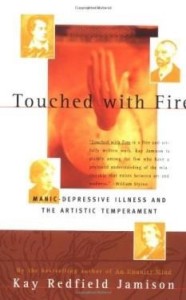
TOUCHED WITH FIRE: MANIC-DEPRESSIVE ILLNESS AND THE ARTISTIC TEMPERAMENT – by Kay Redfield Jamison
From the author of the New York Times bestseller, An Unquiet Mind, Touched with Fire is an authoritative look at the relationship between manic-depressive illness and the artistic temperament. Psychiatrist Jamison advocates a restrained, humanistic approach to treatment that does not “cure” the disorder at the expense of artistic inspiration.
THE PRICE OF GREATNESS: RESOLVING THE CREATIVITY AND MADNESS CONTROVERSY – by Arnold M. Ludwig
Sylvia Plath, Friedrich Nietzsche, Eugene O’Neill, Jean-Paul Sartre, Enrico Caruso….Is there a link between creativity and madness? Seeking to answer this age-old question, The Price of Greatness explores the lives and achievements of over 1,000 extraordinary men and women. Filled with colorful anecdotes about the most eminent people of our times people from the arts, sciences, politics, business, sports, and the military this book provides a fascinating description of what makes some of us achieve greatness.
THE INSANITY HOAX: EXPOSING THE MYTH OF THE MAD GENIUS – by Judith Schlesinger
This groundbreaking book sheds new light on an old and destructive stereotype: the idea that the highly talented must suffer a lifetime of psychological torment in payment for their exceptional gifts. Despite exaggerated professional claims, widespread popular assumptions, and the dramatic parade of “mad geniuses” in the media, no one has ever proved that creative people are more prone to psychopathology than any other group. The Insanity Hoax tracks this fantasy’s history from its birth in ancient Greece to today, showing how Plato’s benevolent “divine madness” slowly darkened into a symptom of bipolar disorder — and why the myth is too deeply embedded in society to ever disappear. Psychologist, educator, and jazz writer Dr. Judith Schlesinger uses her three decades of research and creative and clinical experience to make a convincing case, while providing a witty and entertaining read.
MISDIAGNOSIS AND DUAL DIAGNOSES OF GIFTED CHILDREN AND ADULTS: ADHD, BIPOLAR, OCD, ASPERGER’S, DEPRESSION, AND OTHER DISORDERS – by James T. Webb, Edward R. Amend, Nadia E. Webb, Jean Goerss, Paul Beljan, & F. Richard Olenchak
Our brightest, most creative children and adults are often being misdiagnosed with behavioral and emotional disorders such as ADHD, Oppositional-Defiant Disorder, Bipolar, OCD, or Asperger’s. Many receive unneeded medication and inappropriate counseling as a result. Physicians, psychologist, and counselors are unaware of characteristics of gifted children and adults that mimic pathological diagnoses. Six nationally prominent health care professionals describe ways parents and professionals can distinguish between gifted behaviors and pathological behaviors.
WHEN WALLS BECOME DOORWAYS: CREATIVITY AND THE TRANSFORMING ILLNESS – by Tobi Zausner
Chronic illness may feel like an impassible barrier, but it can become the doorway to a new and more creative existence. Leonardo da Vinci, Frida Kahlo, Michelangelo, and Georgia O’Keeffe are among the many artists whose physical disorders enhanced their creativity and transformed their lives. Illness shaped their work, and their masterpieces changed our world. In the face of pain and disability, they showed perseverance and ingenuity, revealing that life’s lowest moments can hold great potential for creativity and growth. The artists profiled in this book came from many different backgrounds and worked in a variety of media. But all of them experienced a transforming illness by using creativity to triumph over challenges. A transforming illness can happen to anyone at any time, from early in life to its very end. It can even happen more than once. Whether it is a single episode of poor health or a chronic condition, things are never the same afterward. When Tobi Zausner was diagnosed with ovarian cancer in 1989, her doctor didn’t think she would last the year, but her life was transformed. For Zausner and the other artists discussed in these pages, the wall of illness became a door of opportunity. Using fascinating and well-documented life stories of artists and drawing upon her own experience, Zausner offers us methods for accessing our creative abilities and ways to turn a time of poor health into achievement and a more meaningful new life. Creativity is a basic human capacity extending across racial and cultural boundaries, as shown by the artists in this book. In their diversity and their determination they demonstrate that the transforming illness is fundamental to the human condition.
- Interdisciplinary Perspectives
-
GENESES, GENEALOGIES, GENRES, AND GENIUS: THE SECRETS OF THE ARCHIVE – by Jacques Derrida, Beverley Bie Brahic (Trans.)
Jacques Derrida argues that the feminist and intellectual Hélène Cixous is the most important writer working within the French idiom today. To prove this, he elucidates the epistemological and historical interconnectedness of four terms: genesis, genealogy, genre, and genius, and how they pertain to or are implicated in Cixous’s work. Derrida explores Cixous’s genius (a masculine term in French, he is quick to point out) and the inspiration that guides and informs her writing. He marvels at her skillful working within multiple genres. He focuses on a number of her works, including her extraordinary novel Manhattan and her lyrical and evocative Dream I Tell You, a book addressed to Derrida himself and one in which Cixous presents a series of her dreams. Derrida also delves into the nature of the literary archive, the production of literature, and the importance of the poetic and sexual difference to the entirety of his own work. For forty years, Derrida had a close personal and intellectual relationship with Hélène Cixous. Clever, playful, and eloquent, Geneses, Genealogies, Genres, and Genius charts the influence these two critical giants had on each other and is the most vital work to address Cixous’s contribution to French thought.
MAKING IS CONNECTING – by David Gauntlett
In Making is Connecting, David Gauntlett argues that through making things, people engage with the world and create connections with each other. Both online and offline, we see that people want to make their mark on the world, and to make connections. During the previous century, the production of culture became dominated by professional elite producers. But today, a vast array of people are making and sharing their own ideas, videos, and other creative material online, as well as engaging in real-world crafts, art projects, and hands-on experiences. Gauntlett argues that we are seeing a shift from a ‘sit-back-and-be-told culture’ to a ‘making- and-doing culture’. People are rejecting traditional teaching and television, and making their own learning and entertainment instead. Drawing on evidence from psychology, politics, philosophy, and economics, he shows how this shift is necessary and essential for the happiness and survival of modern societies.
NEUROMANCER – by William Gibson
Twenty years ago, it was as if someone turned on a light. The future blazed into existence with each deliberate word that William Gibson laid down. The winner of Hugo, Nebula, and Philip K. Dick Awards, Neuromancer didn’t just explode onto the science fiction scene—it permeated into the collective consciousness, culture, science, and technology. Today, there is only one science fiction masterpiece to thank for the term “cyberpunk,” for easing the way into the information age and Internet society. Neuromancer’s virtual reality has become real. And yet, William Gibson’s gritty, sophisticated vision still manages to inspire the minds that lead mankind ever further into the future.
THE TIPPING POINT: HOW LITTLE THINGS CAN MAKE A BIG DIFFERENCE – by Malcolm Gladwell
The tipping point is that magic moment when an idea, trend, or social behavior crosses a threshold, tips, and spreads like wildfire. Just as a single sick person can start an epidemic of the flu, so too can a small but precisely targeted push cause a fashion trend, the popularity of a new product, or a drop in the crime rate. This widely acclaimed bestseller, in which Malcolm Gladwell explores and brilliantly illuminates the tipping point phenomenon, is already changing the way people throughout the world think about selling products and disseminating ideas.
METAPHORS WE LIVE BY – by George Lakoff & Mark Johnson
The now-classic Metaphors We Live By changed our understanding of metaphor and its role in language and the mind. Metaphor, the authors explain, is a fundamental mechanism of mind, one that allows us to use what we know about our physical and social experience to provide understanding of countless other subjects. Because such metaphors structure our most basic understandings of our experience, they are “metaphors we live by”—metaphors that can shape our perceptions and actions without our ever noticing them. In this updated edition of Lakoff and Johnson’s influential book, the authors supply an afterword surveying how their theory of metaphor has developed within the cognitive sciences to become central to the contemporary understanding of how we think and how we express our thoughts in language.
THE AESTHETIC MIND: PHILOSOPHY AND PSYCHOLOGY – by Elisabeth Schellekens & Peter Goldie (Eds.)
The Aesthetic Mind breaks new ground in bringing together empirical sciences and philosophy to enhance our understanding of aesthetics and the experience of art. An eminent international team of experts presents new research in philosophy, psychology, neuroscience, and social anthropology: they explore the roles of emotion, imagination, empathy, and beauty in this realm of human experience, ranging over visual and literary art, music, and dance. Among the questions discussed are: Why do we engage with things aesthetically and why do we create art? Does art or aesthetic experience have a function or functions? Which characteristics distinguish aesthetic mental states? Which skills or abilities do we put to use when we engage aesthetically with an object and how does that compare with non-aesthetic experiences? What does our ability to create art and engage aesthetically with things tell us about what it is to be a human being? This ambitious and far-reaching volume is essential reading for anyone investigating the aesthetic and the artistic.
ON THE AESTHETIC EDUCATION OF MAN – by Friedrich Schiller, Reginald Snell (Trans.)
A classic of 18th-century thought, Schiller’s treatise on the role of art in society ranks among German philosophy’s most profound works. An important contribution to the history of ideas, it employs a political analysis of contemporary society — and of the French Revolution, in particular — to define the relationship between beauty and art.
CREATIVITY AND BEYOND – by Robert Paul Weiner
For the past decade, creativity has been extolled as a virtue in education, business, and the media. Creativity and Beyond offers a wide-ranging, interdisciplinary tour of cultures past and present to examine the different ways people have conceived of “creativity” and how the common understanding of creativity is changing in the current flux of global culture. The book demonstrates linkages among disciplines and cultures through the use of many illuminating examples-Egyptian pyramids, Chinese philosophy, Michelangelo, jazz, the United Nations, genetic engineering. Weiner analyzes the ways in which understanding creativity is tied to broader contemporary patterns, including intellectual concerns with postmodernism; trends in the arts; the changing status of women; the power of the electronic media; multiculturalism; developments in psychology, science, and technology; and the dramatic political, economic, and social transformations of our age.
LUDWIG WITTGENSTEIN: LECTURES AND CONVERSATIONS ON AESTHETICS, PSYCHOLOGY AND RELIGIOUS BELIEF – by Ludwig Wittgenstein, Cyril Barrett (Ed.)
In 1938 Wittgenstein delivered a short course of lectures on aesthetics to a small group of students at Cambridge. The present volume has been compiled from notes taken down at the time by three of the students: Rush Rhees, Yorick Smythies, and James Taylor. They have been supplemented by notes of conversations on Freud (to whom reference was made in the course on aesthetics) between Wittgenstein and Rush Rhees, and by notes of some lectures on religious belief. As very little is known of Wittgenstein’s views on these subjects from his published works, these notes should be of considerable interest to students of contemporary philosophy. Further, their fresh and informal style should recommend Wittgenstein to those who find his Tractatus and Philosophical Investigations a little formidable.
- Biographies
-

ROOM FULL OF MIRRORS: A BIOGRAPHY OF JIMI HENDRIX – by Charles R. Cross
It has been more than thirty-five years since Jimi Hendrix died, but his music and spirit are still very much alive for his fans everywhere. Charles R. Cross vividly recounts the life of Hendrix, from his difficult childhood and adolescence in Seattle through his incredible rise to celebrity in London’s swinging sixties. It is the story of an outrageous life — with legendary tales of sex, drugs, and excess — while it also reveals a man who struggled to accept his role as idol and who privately craved the kind of normal family life he never had. Using never-before-seen documents and private letters, and based on hundreds of interviews with those who knew Hendrix — many of whom had never before agreed to be interviewed — Room Full of Mirrors unlocks the vast mystery of one of music’s most enduring legends.
BUMPING INTO GENIUSES: MY LIFE INSIDE THE ROCK AND ROLL BUSINESS – by Danny Goldberg
Danny Goldberg has been a hugely influential figure in the world of rock and roll. He did PR for Led Zeppelin; he managed the career of Nirvana; he ran Atlantic, Mercury, and Warner Brothers; he launched Stevie Nicks’ solo career. In Bumping into Geniuses, Goldberg grants an all-access pass to the world of rock and roll, with mesmerizing stories of forty years spent working with legends, including Patti Smith, Warren Zevon, Bruce Springsteen, Kiss, Kurt Cobain and Nirvana, Hole, Stevie Nicks, Bonnie Raitt, the Eagles, Susan Blond, Michael Des Barres, Steve Earle, Led Zeppelin, and more. But there’s more to this story than just Goldberg’s varied career. It’s also a look at the industry itself: a business that was complex and chaotic, a mixture of art and commerce, idealism and selfishness, and sometimes, rock’s most gifted and influential musicians were able to transcend it all.
JOHN – by Cynthia Lennon
The time has come when I feel ready to tell the truth about John and me, our years together and the years since his death. There is so much that I have never said, so many incidents I have never spoken of and so many feelings I have never expressed: great love on one hand; pain, torment, and humiliation on the other. Only I know what really happened between us, why we stayed together, why we parted, and the price I have paid for being John’s wife. —from the Introduction

